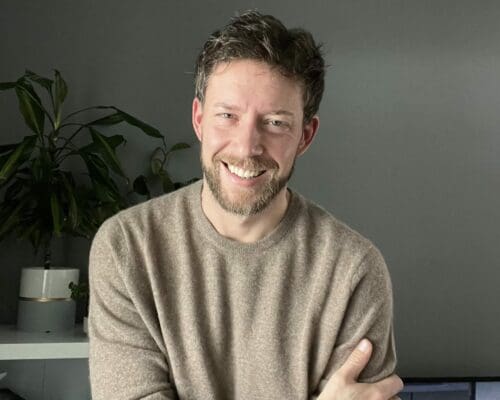Accessible physiotherapy is more than a luxury—it’s a vital pathway to a healthier, more empowered life. In today’s rapidly evolving healthcare landscape, ensuring that quality physiotherapy services reach everyone, regardless of socioeconomic status or location, is essential for fostering holistic well-being. This article explores how breaking down systemic, financial, and educational barriers can pave the way for inclusive care, enabling individuals and communities to thrive.
Understanding the barriers to inclusive physiotherapy
Access to physiotherapy remains a challenge for many underserved communities. Numerous obstacles stand in the way, including high costs, limited availability in remote areas, and a lack of awareness about the benefits of comprehensive physical care. These barriers not only hinder recovery from injuries but also impact long-term quality of life.
Systemic and financial challenges: the cost of care
Many assume that physiotherapy is reserved for those recovering from sports injuries or post-surgery rehabilitation. However, this misconception overlooks its broader role in preventive care, chronic pain management, and overall wellness. Financial constraints, such as expensive treatment fees and inadequate insurance coverage, further restrict access for many individuals. Innovative models—like community clinics, sliding-scale fees, and telehealth services—are emerging to bridge this gap, making physiotherapy a more attainable resource. This perspective aligns with the global priorities outlined in the World Health Organization’s Rehabilitation 2030: A call for action (2017), which emphasizes integrated, person-centered care.
Educational and geographical obstacles: knowledge is power
A significant contributor to limited access is the lack of education about physiotherapy’s diverse benefits. Many communities are unaware that regular, targeted physiotherapy can enhance mobility, reduce chronic pain, and improve overall health. Moreover, geographic isolation means that rural and remote areas often have few physiotherapy clinics, forcing residents to travel long distances for care. These challenges underscore the urgent need for community outreach and education programs that empower individuals with the knowledge they need—a strategy supported by the framework provided in the International Classification of Functioning, Disability and Health (ICF) developed by the World Health Organization (2001).
Embracing holistic healing: where mind meets body
True healing is a holistic process that recognizes the interconnection between the mind and body. Physiotherapy is a cornerstone of this approach—it not only supports physical recovery but also contributes significantly to mental and emotional well-being. By addressing chronic pain, improving mobility, and reducing stress, regular physiotherapy helps individuals regain their independence and elevate their overall quality of life.
The magic of the mind–body connection
Physical wellness and mental health are deeply intertwined. Chronic pain and physical limitations can lead to stress and anxiety, creating a cycle that further undermines overall health. Accessible physiotherapy offers personalized treatment plans that not only strengthen the body but also alleviate mental burdens, fostering resilience and empowering patients to take charge of their well-being. Recent research, such as the systematic review by Cottrell et al. (2017), supports the efficacy of innovative approaches like telehealth in delivering high-quality physiotherapy care to diverse populations.
Dispelling misconceptions with clarity and care
It is common for people to mistakenly believe that physiotherapy is solely beneficial for athletes dealing with sports injuries or for individuals recovering from surgery—a narrow view that disregards its broader applications in preventive care and chronic pain management. Equally pervasive is the perception that physiotherapy is prohibitively expensive, accessible only to those with comprehensive insurance. In truth, innovative care models such as community clinics with sliding-scale fees and digital solutions like telehealth are effectively breaking down financial barriers and broadening access for individuals from all walks of life.
There is also a widespread misunderstanding that physiotherapy addresses only physical healing, neglecting the essential interplay between mental and emotional well-being. On the contrary, effective physiotherapy is built upon the foundation of the mind–body connection, where alleviating physical discomfort often leads to improved mental health, reduced stress, and a better overall quality of life. Dispelling these misconceptions is essential to empower individuals and communities to embrace the full spectrum of benefits that accessible, inclusive physiotherapy can offer as part of a truly holistic approach to health.
Inspiring transformation: insights for individuals, workplaces, and communities
Accessible physiotherapy offers valuable insights and actionable strategies that can benefit everyone—from individual patients to entire communities. For individuals, embracing a holistic health mindset means recognizing that physical well-being is closely linked with mental and emotional health. Learning about proper body mechanics, self-care techniques, and preventive exercises can help manage chronic pain and reduce the risk of future injuries. It also means advocating for one’s own health by exploring alternative solutions, such as telehealth or community programs, when traditional care options are limited.
Workplaces can play a critical role by prioritizing employee well-being through ergonomic practices, regular movement breaks, and access to wellness resources. By collaborating with local healthcare providers to offer on-site or virtual sessions, employers can help prevent minor issues from escalating into major health concerns. Similarly, communities can foster accessible health networks by working together with local healthcare providers, policymakers, and organizations to develop initiatives like mobile clinics and educational workshops—ensuring that quality care is available to everyone, especially those in marginalized groups.
Turning insights into action
Creating a more inclusive healthcare environment starts with informed, proactive steps. Reflect on how accessible physiotherapy can transform lives—not just by healing injuries, but by empowering individuals to lead healthier, more independent lives. Whether you are a patient, a healthcare provider, or a community advocate, your efforts matter. Share these insights with friends, family, and colleagues to raise awareness about the importance of breaking down healthcare barriers. Engage with local health initiatives, participate in community programs, and advocate for policies that improve access to quality care.
By coming together as individuals, workplaces, and communities, we can build a future where healthcare is truly accessible to all—one success story, one healing journey, and one empowered life at a time.
References:
World Health Organization. (2017). Rehabilitation 2030: A call for action.
World Health Organization. (2001). International Classification of Functioning, Disability and Health (ICF).
Cottrell, M. A., et al. (2017). Telehealth in musculoskeletal physiotherapy: A systematic review of clinical outcomes, patient experiences, and cost-effectiveness. Physical Therapy, 97(4), 380–400.


